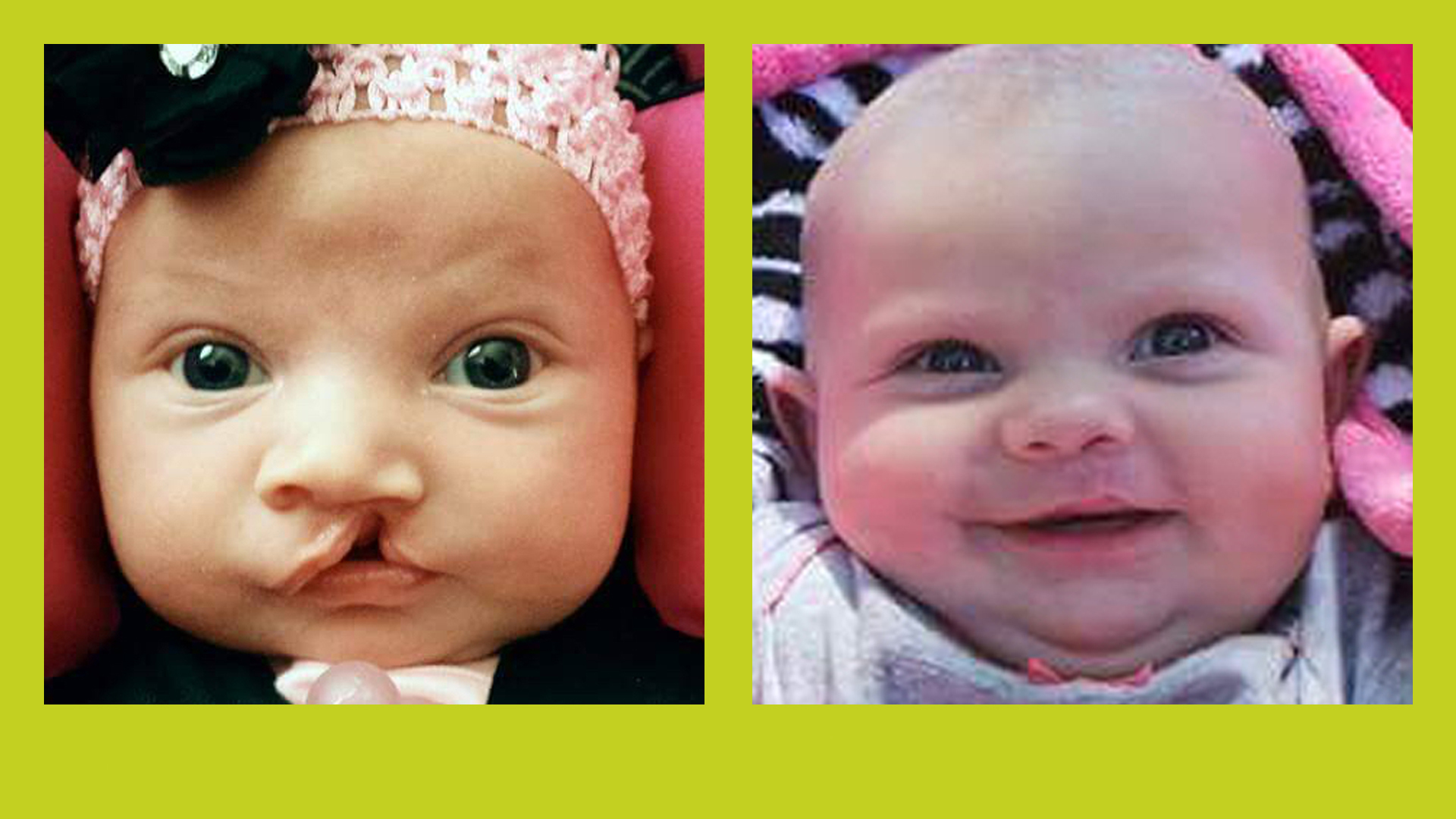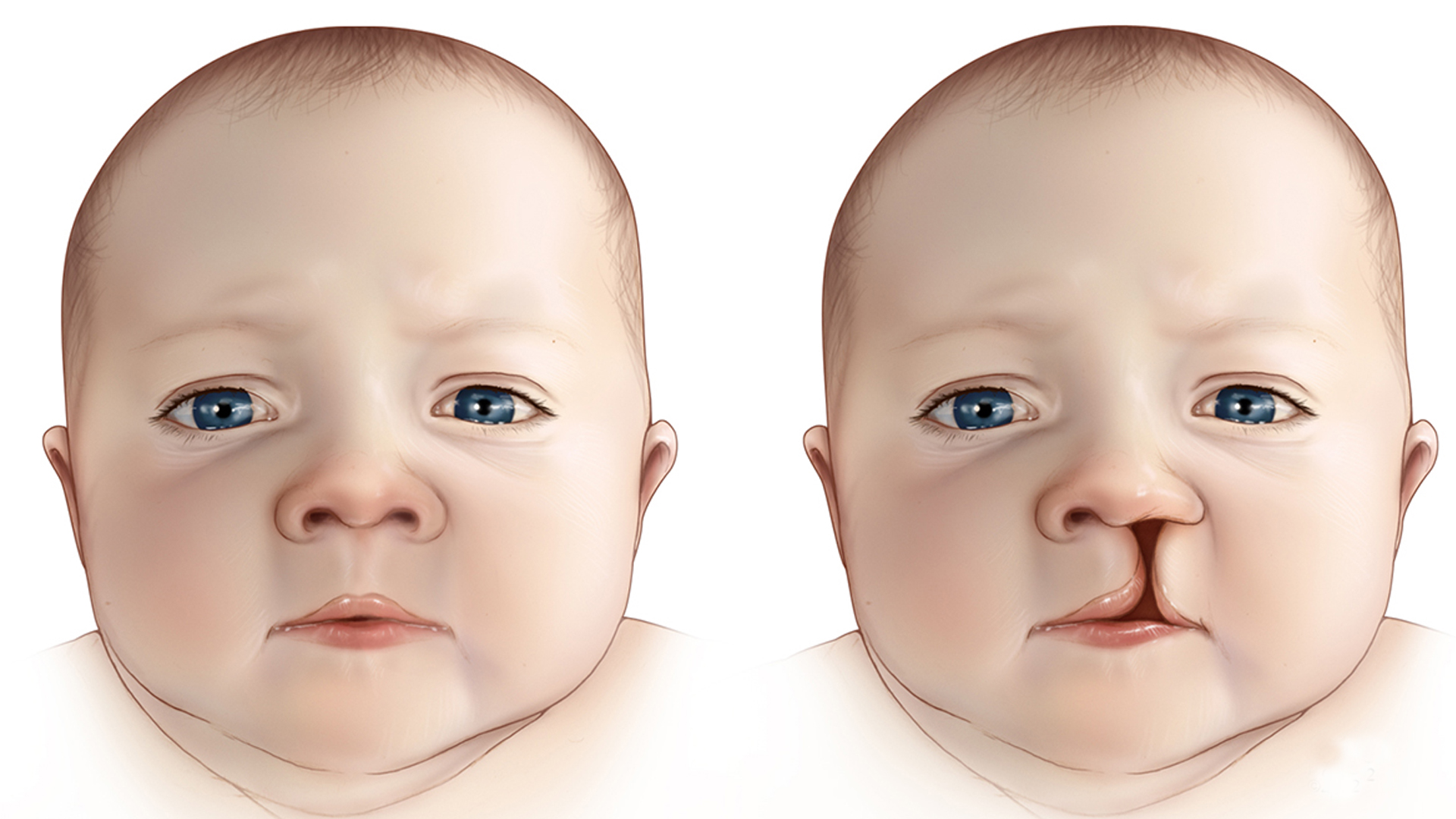Cleft Lip & Palate
A cleft lip or a cleft palate is a facial and oral malformation that occurs very early during pregnancy, while the foetus is still developing inside the mother. It happens when there is an insufficient amount of tissue in mouth or lip area, or when the available tissue does not join together properly. With a cleft lip, the physical split or separation of the two sides of the upper lip appears as a narrow opening or gap in the skin of the upper lip, often extending beyond the base of the nose, including the bones of the upper jaw and or upper gum. A cleft palate is a split or opening in the roof of the mouth which could involve the hard palate (the bony front portion of the roof of the mouth), and/or the soft palate (the soft back portion of the roof of the mouth).
Cleft lip and cleft palate can occur on one or both sides of the mouth. Because the lip and the palate develop separately, it is possible to have a cleft lip without a cleft palate, a cleft palate without a cleft lip, or both together.
A cleft of the lip and palate can cause a variety of dental problems. Clefts occur between the eye tooth and the lateral incisors, and in some cases, the lateral incisors may be entirely absent from the mouth. In other cases where a cleft is present, the incisors and other teeth may be poorly formed with an abnormally shaped crown or tooth root. The teeth in the area of the cleft may be displaced, resulting in an abnormal erupting of the teeth.
With proper dental care, people with a cleft lip and/or palate can have healthy teeth. This requires proper oral cleaning, fluoride treatments and good nutrition. It is recommended that the first dental visit be scheduled at about one year of age or earlier.


